This round-up is part of Harvard Magazine’s series “At Home with Harvard,” a guide to what to read, watch, listen to, and do while social distancing. Read the previous selections, featuring articles about climate change, racial justice, theater, and more, here.
Our writers and editors have traveled near and far to capture stories at their most raw and authentic. We’ve traveled to Myanmar, Chile, Vietnam, India, China, and Brazil to report on the work and achievements of Harvard alumni all over the world. Below, we reflect on what those travels meant to us.
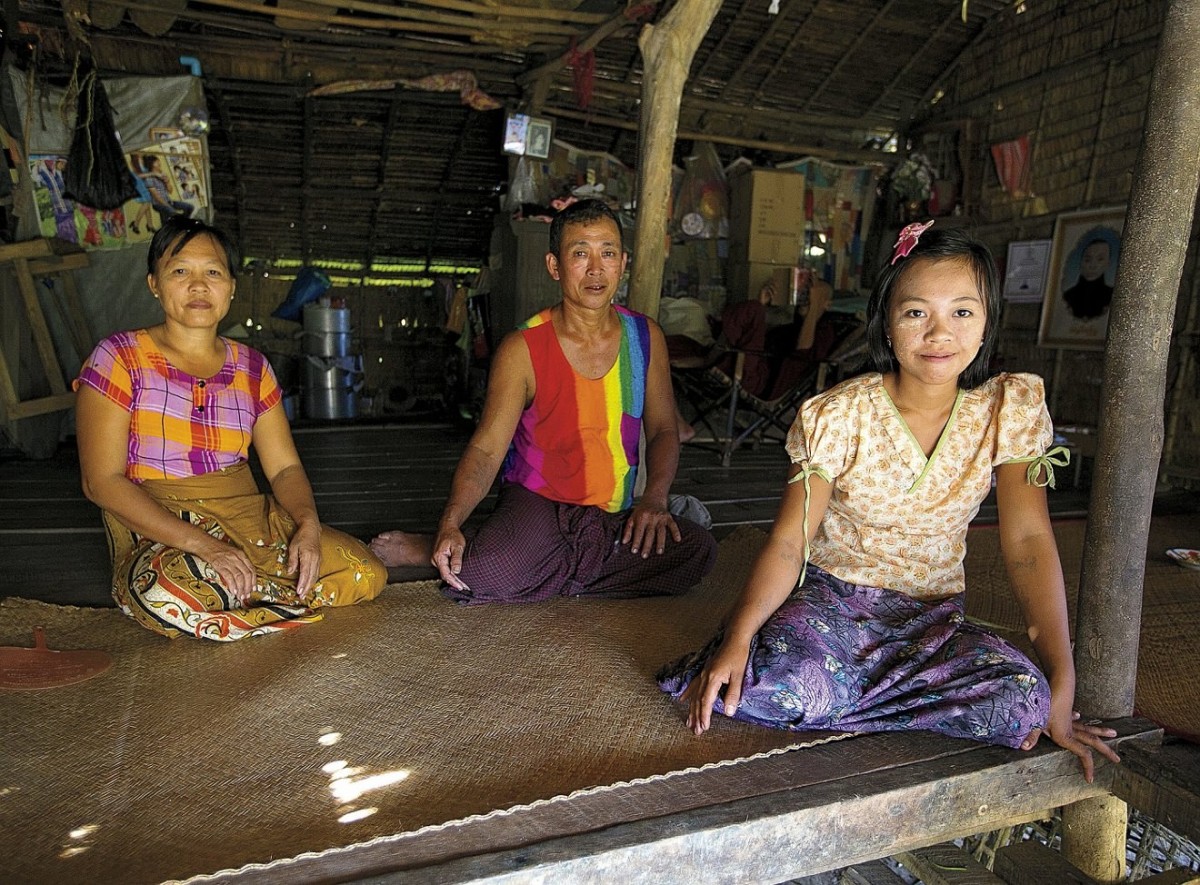
Daw Than Than Sein, U Win Hlaing, and daughter Win Win Thu at their home in the Ayeyarwaddy River Delta village of Wakouktaw; Proximity Designs’ irrigation equipment has helped them expand their farm and boost their income significantly.
Photograph © Tim Mitzman for Proximity Designs 2013
During a late 2013 visit to Myanmar, I met with Debbie Aung Din Taylor and Jim Taylor, both M.P.A. ’90, the founders and leaders of Proximity Designs, an unusually close-to-the-ground, sensitive nonprofit organization that worked with villagers, under the most trying circumstances, to improve their lives under what was then an oppressive military dictatorship. Myanmar’s turn toward democracy—a hopeful omen—drew in others from around the world, and raised expectations for a better future. As we now know, many of those hopes and expectations have, at best, been deferred, as the country continues to struggle with divided military and elected governance, unresolved civil wars and ethnic divisions, and the horrors of the explusion of the Rohingya. But the example of rural development deployed in the countryside, with guidance from Kennedy School experts, remains valid and inspiring.

A rendering of the Giant Magellan Telescope in operation in Chile, deploying the lasers for its adaptive-optics system
Simulation by Todd Mason/Courtesy of Giant Magellan Telescope Organization
The foothills of the Andes, in northern Chile, are one of the best sites for astronomical observatories in the world. During a visit in 2004, I entered the overnight lives of astronomers, who rise for breakfast at 6 p.m., observe all night, return to their rooms for dinner at dawn, and sleep off the day until they can again get to work. Building their instruments—the exquisitely balanced, optically remarkable telescopes—is the contemporary equivalent of erecting a medieval cathedral: the work of a generation, or generations, of scientists and engineers, whom I visited in Pasadena and Tucson (where the mirrors are cast and ground, one per year, to tolerances of a millionth of an inch). Harvard is a member of the coalition building a new 30-meter telescope, the Giant Magellan, which hopes to collect its first light by 2029—already almost a decade later than when I reported…extending into the next generation of astronomers.
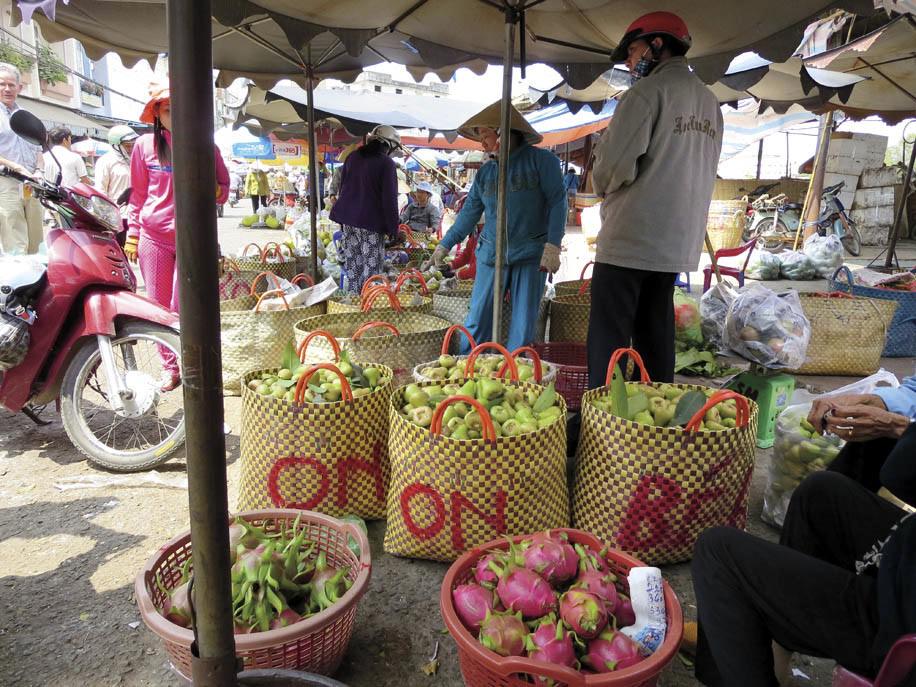
The wholesale produce market in My Tho
Photograph by Susan Bennett
Despite the war that did so much damage to Vietnam, and to U.S. politics, the countries are today on a friendly basis. Much of the work that underlies that relationship was carried on quietly by a few people embedded in the Kennedy School. For decades, they encouraged Vietnamese leaders to come to the West to learn about running a modern economy and country. Although the government remains staunchly Communist, it has changed, and the best symbol of that maturation is a new university, based on western academic principles, being created with those Harvard affiliates’ help. During this magazine’s reporter’s visit to the country, Vietnamese leaders who are alumni of Harvard courses and programs turned out en masse to express their strong regard for the University, and their strong desire to remain in touch and affiliated—an odd sensation indeed, in a Hanoi restaurant. The same people who built the nascent university in Vietnam, it is interesting to note, were deeply engaged in making it possible for Ken Burns and Lynn Novick to create their landmark PBS series on Vietnam, as reported here.
~John Rosenberg, Editor
One of my most valued experiences as a Harvard undergrad was studying and eventually living in South Asia. Elizabeth Gudrais’s “Into India” brings me back to the energy of living in that country, with its incredibly varied skylines and cityscapes that are more diverse than anything Americans are used to. Harvard’s engagement in South Asia (a region no longer confined by, as one source in the story puts it, “the British embrace”) has really blossomed in the last few decades, and Gudrais’s story is a slice of some of that work, from architecture and urban planning to public health.
~Marina Bolotnikova, Associate Editor
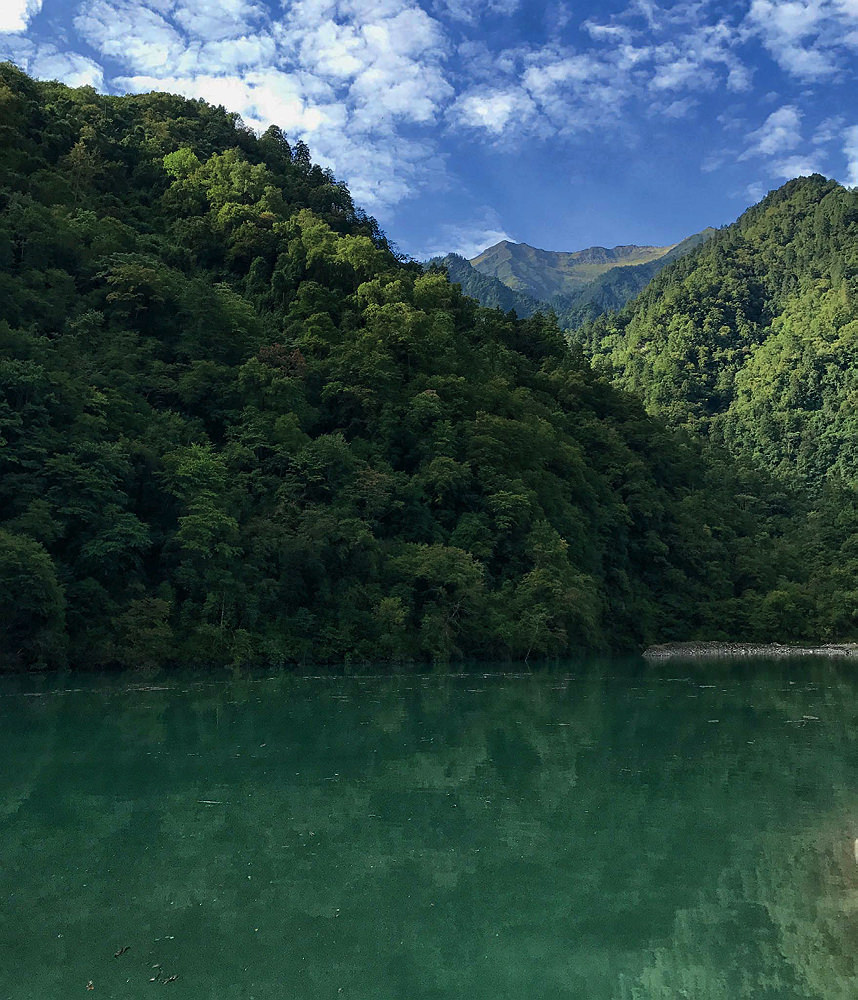
The lake above the dam at Si’er Cun, with the Min Mountains beyond
Photograph by Jonathan Shaw
China is home to the most botanically diverse temperate forests in the world, a fact that horticulturists, botanists, and many amateur gardeners know well. Traveling in some of the floristically richest regions of China with experts from Harvard’s Arnold Arboretum, the Beijing Botanical Garden, and Chengdu’s Institute of Biology, it immediately became apparent why China’s botanical treasures are at risk: small stands of exceedingly rare and beautiful trees thrive in one valley, but are absent from the next, irrespective of human intervention. Traveling in Sichuan, China, for “Botanizing in the ‘Mother of Gardens’” drove home the point: naturally isolated in this way by the landscape, these clusters are at far greater risk of being lost from pathogens, climate change, or development than they would be if they were distributed widely across the region. And that is what fuels a global, 10-year, seed-collection project spearheaded by the Arnold Arboretum to collect as much of the global woody plant diversity as can grow in temperate American arboreta.
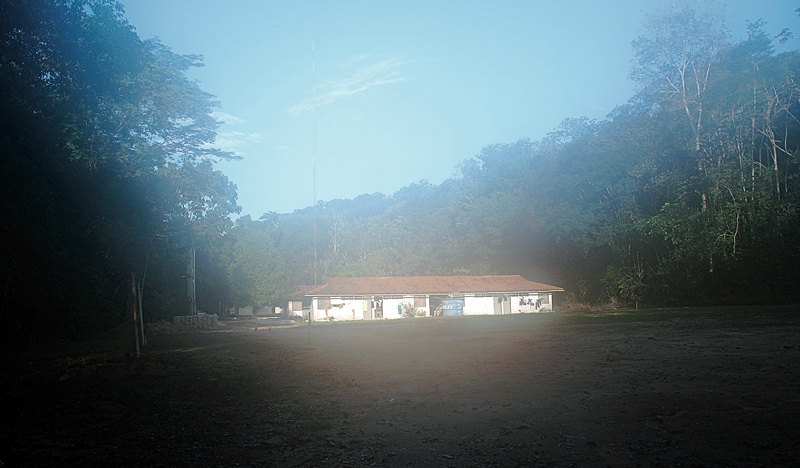
The sleeping quarters at Ducke, the main camp
Photograph by Jonathan Shaw
There is nothing like witnessing fieldwork firshand to get a sense of how much effort goes into gathering data. In 2010, I accompanied the eminent atmospheric scientist Stephen Wofsy, one of the scientists who years earlier had teased out how chlorofluorocarbons might destroy atmospheric ozone, to study the fate of the rainforest in the context of a changing climate. “Models—and Mud—in Amazonia” describes how students from Harvard worked together on a research project with students from Brazilian universities. As Wofsy put it, this was “not a classroom study. It exposes the students to different cultures and environments and ways of doing things, because people are an inescapable part of the system. The course combines those experiences with a scientific, knowledge-seeking framework.” The work shared at least one similarity with Cambridge-based study: an all-nighter, in this case tending an instrumented weather balloon to measure gas exchange when the equipment on a stationary tower malfunctioned.
~Jonathan Shaw, Managing Editor
on assignment in Chile in 2008, writer Elizabeth Gudrais spent time in kindergarten classrooms with teachers and students taking part in a Harvard program aimed at improving early-childhood education in that country and gathering research that could be put into practice in countries around the world. The Harvard-designed Un Buen Comienzo (UBC; “a good start,” reminiscent of Head Start) took a combined approach not only to literacy and classroom education, but also to children’s health and community well-being, and the story covers a range of concerns: parental engagement, the lung-clogging smog in Santiago, the biological consequences of stress. “Children’s problems are interdisciplinary,” UBC director Andrea Rolla, Ed.M. ’06, told Gudrais, and so should be the solutions. As Gudrais concludes in “The Developing Child,” providing supportive environments for young children is “central to the success of our society.”
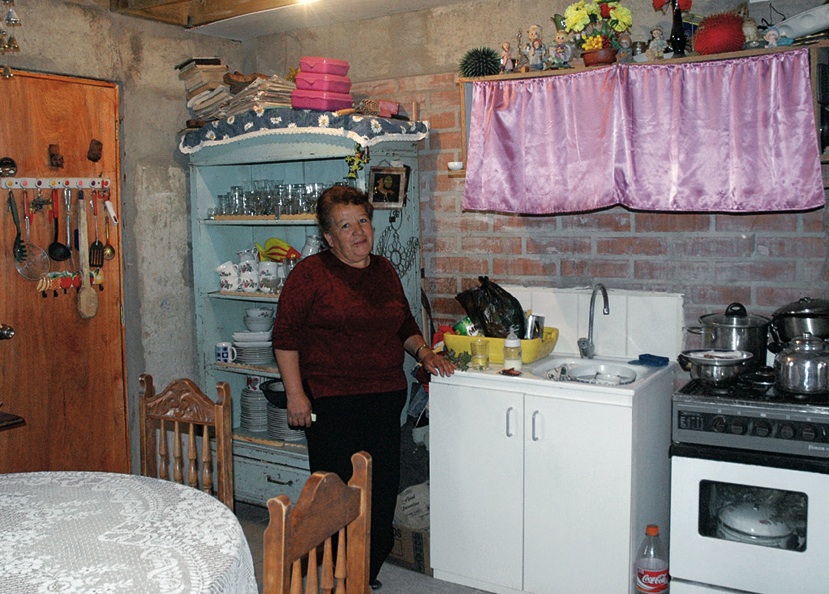
Rosa Estrella Ortega Roa has big plans for the unit where she lives with her two-year-old grandson. Although the walls and ceiling of her kitchen are still unfinished
“For Santiago’s Poor, Housing with Dignity.” While in Santiago, Gudrais paid a visit to a then-new low-cost housing project for poor residents. The red-and-white rowhouses and townhouses grew out of an idea conceptualized in part by the Graduate School of Design, and Harvard graduates in architecture and planning were instrumental to the buildings’ design. Gudrais describes the tidy homes built close to the city center on a former landfill, where onetime squatters have become homeowners, and she also gives a glimpse of the unusual, award-winning design practices that kept costs extremely low. “ELEMENTAL”—the architecture firm—“builds the townhouses three stories tall, but fills in only the second floor and the staircase to get there. Residents must complete their own homes’ third floors; the firm holds workshops on building structurally sound staircases, floors, and ceilings.” As one project manager says of the residents and their creativity in helping to build their own low-cost community, “The energy is incredible.”
~Lydialyle Gibson, Associate Editor
More from “At Home with Harvard”
- Spring Blooms: Your guide to accessing the Arnold Arboretum as the seasons turn in Boston
- Harvard in the Movies: Our favorite stories about Harvardians on screen
- The Literary Life: Our best stories about the practice and study of literature
- Night at the Museum: Our coverage of Harvard’s rich museums and collections
- Nature Walks: Walking, running, and biking in Greater Boston’s green spaces, even while social distancing
- Supporting Local Businesses: Our extensive coverage of local restaurants and retailers, and how you can support them during this time of crisis
- Medical Breakthroughs: Our best stories going deep into the ideas and personalities that will shape the medical care of tomorrow
- Rewriting History: From race and colonization to genetics and paleohistory, our favorite stories about the people reshaping the study of history
- The Climate Crisis: Highlights from our wide-ranging coverage of the environment
- Crimson Sports Illustrated: With 2020 winter sports ending early and the spring collegiate season wiped out almost entirely, we look back at Crimson highlights from past years.
- The Real History of Women at Harvard: Stories covering the admission of women, the Harvard-Radcliffe merger, the rise of women in the faculty ranks, Harvard’s first woman president, and more
- The Undergraduate: Our favorite student essays on the undergraduate experience
- The Secret Lives of Animals: From zoology and evolutionary science to animal-rights law to the joys of local wildlife, a selection of our favorite animal stories
- Harvard on the Small Screen: Our coverage of the creators, writers, and actors in your favorite TV shows
- Extraordinary Lives: From our “Vita” section, extraordinary profiles of authors, artists, activists, and more
- Great Legal Minds: Our favorite stories on the minds reshaping American law
- Harvard History through a New Lens: Some of our most notable stories about obscure, dark, or surprising episodes in Harvard’s history
- Health and Fitness: Our extensive coverage of Harvard’s breakthough health and wellness research
- Pride Month: Stories of Harvard's LGBTQ life, research and history
- Inequality in America: Stories of America’s extreme inequality
- The Immigrant Experience: A selection of our writing on immigration, displacement, and the global refugee crisis
- Harvard in the World: Harvard Magazine’s coverage of the University’s expanding global reach
- Theater & Broadway: Harvardians take to the stage.
- American Democracy: Our coverage of the nation's ailing democracy







